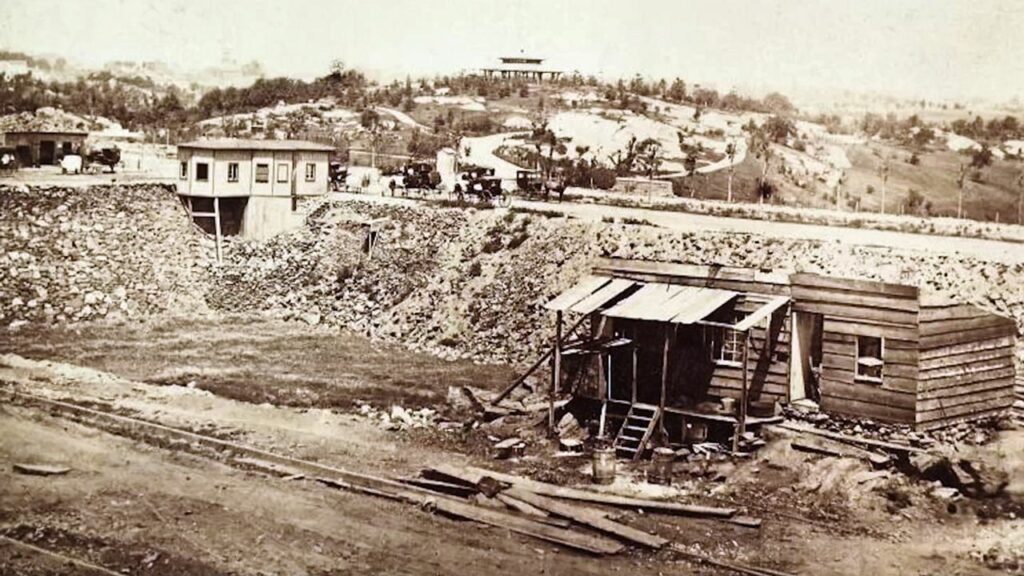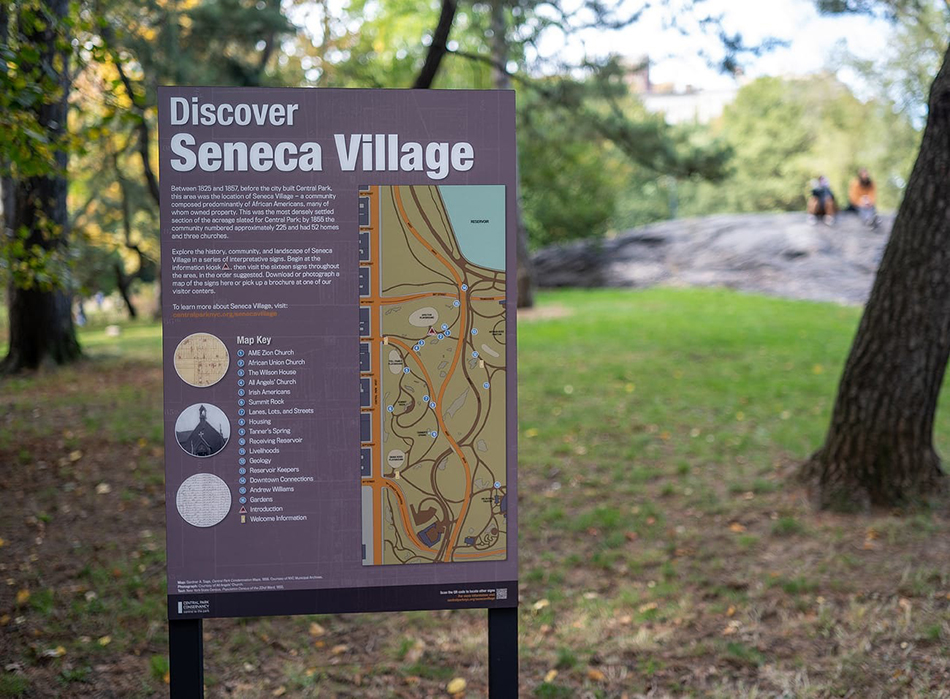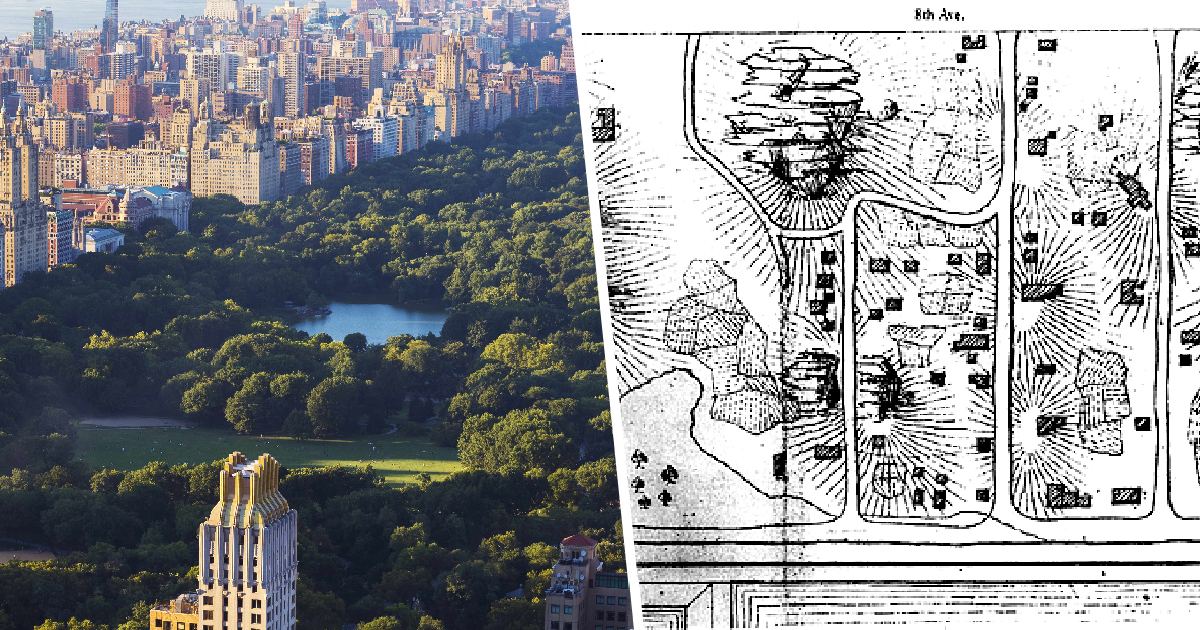By Panagiota Katsaveli,
New York City is definitely one of the most well-known and loved cities worldwide, with millions of residents experiencing their dream life in its streets and other people wishing to follow suit. It is undoubtedly that many attractions catch the eye of visitors in this exciting city, which seems to emerge from a time of the past reminding us of the true glory of the U.S.A., and a special place in this endless list is reserved for the one and only Central Park. This vast green area in the middle of NY is a symbol of the city and a popular filming spot for movies and TV shows, but most people are not aware of the history hidden underneath it and the destructions that led to its creation.
Let us take a trip down memory lane. Our story goes way back to the 1820s when the land currently occupied by Central Park was considered the open countryside of this big metropolitan city; people, it is believed, would move to this area of the city in order to get away from the dangerous, racist and crowded Lower Manhattan. Hence, it came to be home to a population of at least 200-300 people at the time of destruction. Seneca Village began in 1825, when the landowners, John and Elizabeth Whitehead, subdivided their land and sold it in 200 parts and stretched from what is now West 83rd to 89th Streets. The area was, for the most part, inhabited by a strong black community that invested immense amounts of time and money, in order to create a comfortable safe living environment: they built homes, churches, schools, etc. Besides the predominant black presence, German and Irish immigrants flooded the area simultaneously, creating a rare instance of harmonious coexistence between different cultural-racial communities. In the 1850s, however, it all came to an end. The city took over the area through eminent domain to form a park for its ever-growing population. This 840-acre oasis we know today as Central Park is the first example of massive gentrification.

Even though the origin behind the name Seneca Village still remains a mystery, the area consisted mainly of people of African American descent who led a peaceful and legal life there. The village existed between 1825 and 1857. In 1855, there were approximately 225 residents, a population that consisted of roughly two-thirds African Americans, one-third Irish immigrants, and a small number of Germans. The property owned by African Americans in this place gave the right to the black male members to vote and acquire a better status in a racist, white society; evidently, Seneca Village was home to 20% of the New York’s African American property owners and 15% of its African American voters. For them, it was a chance to acquire stability and a better future for the generations to follow. These presumably constitute some of the most important reasons that led to the destruction of this blooming neighborhood to build a park in the heart of New York. This park would resemble the green areas in Europe and Great Britain and could function as a temporary escape from the urban pressures of the densely populated Manhattan for the benefit of white merchants, bankers, and landowners. By creating this beautiful green area in the middle of this metropolitan city, it was merely the land that was lost, but most importantly the community and the feeling of life emerging from it.
For a long period of time, though, Seneca Village remained unappreciated in the public opinion for what it really was. Instead of being painted as a community of middle or lower-class African American residents as well as immigrants of German and Irish descent, the media portrayed the area as ‘a rather squalid shantytown inhabited by squatters’. Hence when, in the summer of 1871, park workers dislodged two coffins in the vicinity, a mystery was created despite the fact that one of them providing identification of the occupant: an Irish teenager, who had been a parishioner of Seneca Village’s All Angels Episcopal Church.

The work that brought the existence of Seneca Village back to the surface started back in the 1990s from different determined archaeologists and scholars. In 2011, a group called the Institute for the Exploration of Seneca Village History started a collaboration with the Central Park Conservancy to conduct an excavation on the site. The findings included everyday objects utilized by the residents of the area and they gave scientists a better idea about life in this community. In 2019, another step towards the right direction was taken, when the Conservatory installed signs with information about Seneca Village. This allows tourists and visitors of the park to gain some valuable insight into the life of this wonderful community and understand its place in the reality of 19th century New York City.
To conclude, it is safe to admit that Central Park constitutes the perfect place for relaxation and a breath of fresh air in the enormous urban center that is New York. However, this does not mean that we deny the horrible facts and destruction about its very creation hidden for many years. The existence and history of Seneca Village need to become widespread giving the chance to those who lost their properties for this park to be recognized, thus providing them with a special much-needed form of justice. Seneca Village and its residents are not merely the history of an iconic sight, but most importantly they belong to the wider total named the history of New York City!
References
- Chakraborty, R., The lost neighborhood under New York’s Central Park, Vox, Available here
- Central Park Conservancy, The Story of Seneca Village, Available here




